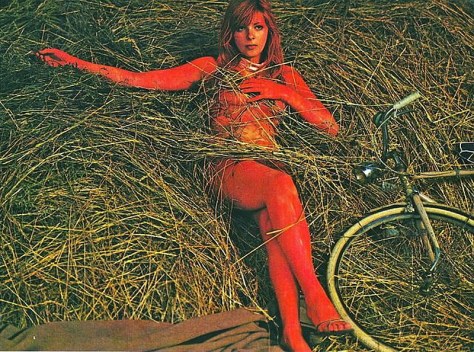
Format: Blu-ray + DVD
Part of Kijû Yoshida Love + Anarchism limited edition box-set
Release date: 9 November 2015
Distributor: Arrow Academy
Director: Kijû Yoshida
Writers: Kijû Yoshida, Masahiro Yamada
Cast: Mariko Okada, Toshiyuki Hosokawa, Yuko Kusunoki, Kazuko Inano, Etsushi Takahashi
Japan 1969
169 mins
Kijû Yoshida’s 1960s masterwork on free love and radical politics finally comes to Blu-ray/DVD.
A monumental work of late 60s Japanese cinema, Kijû (also known as Yoshishige) Yoshida’s Eros + Massacre has been rather difficult to view for several years, decades even, its reputation largely kept alive after serving as the title for David Desser’s pioneering book on Japanese New Wave Cinema published in the 1980s. Now, the film finally arrives on DVD and Blu-ray via Arrow as part of their Kijû Yoshida Love + Anarchism’ limited edition box-set, in both its original theatrical cut (the version under review here) and Yoshida’s rarely seen director’s cut, with around 50 minutes of restored footage previously removed for legal reasons.
Even in its shorter form, Eros + Massacre is a deeply challenging and sprawling work that unfurls with gusto over the best part of three hours. The film is split between two connected narratives, one a biography-of-sorts centred on famed Taishô-era polygamous anarchist Sakae Ôsugi (Toshiyuki Hosokawa), and the other a contemporary storyline concerning two university students, Eiko and Wada, as they research Ôsugi’s philosophies on radicalism and free love. Things start to get interesting as the time periods appear to converge, with characters from the 1910s/20s strand – including Ôsugi and the three women that he simultaneously romances (including Yoshida’s wife, actress Mariko Okada) – being fleetingly transposed without explanation to late 60s Tokyo, as if them being discussed by the students had the ability to literally bring past into present. Eiko even gets the opportunity to interview one of the women at one point.
The relationship between historical fact and present speculation as well as the relationship between Ôsugi and his women begin to blur, and confusion is further fuelled (in the theatrical version at least) by the sheer volume of scenes excised at the behest of politician Ichiko Kamichika, who had been romantically linked to Ôsugi and was the inspiration for one of the film’s characters (although her name was changed). In the director’s cut, the balance between past and present segments is heavily skewed towards the former, with the 60s scenes acting more as a framing device rather than a storyline of equal weight. In the theatrical cut, there is a greater sense of equilibrium but on the flipside this also creates a split in dramatic focus.
But the one constant between the two versions is that Yoshida insists that you do your homework, making the film less accessible to those not familiar with the historical context or its reference to contemporary Japanese counterculture. Something that can be enjoyed by all, however, is the film’s ravishing and often indulgent style, with Yoshida making full use of his scoped monochrome framing by regularly trapping his actors in the corners and edges of shots, slicing up their bodies or eye lines in interesting ways, or isolating them within doorways or window openings. Symbolism is also rife, leading to sublime imagery such as an extreme wide shot of the 1920s characters traversing along a seemingly abandoned modern Tokyo motorway, the use of reflections – in mirrors, water etc. – to instigate transitions between the two time periods, and the 60s students re-enacting the deaths of famous martyrs – most notably Jesus on the cross.
Like many films from the Japanese New Wave, Eros + Massacre requires a certain degree of awareness of the socio-political concerns of the time for full comprehension, but the rewards are massive for those willing to put in the work; not to mention that it’s exquisitely presented and, in spite of its difficulties, perhaps still stands as Japan’s quintessential arthouse film. Yoshida would continue his intersecting of the themes of political and romantic radicalism in his loosely related follow-up works Heroic Purgatory (1971) and Coup d’état (1973), which also feature in Arrow’s box-set.
Mark Player









